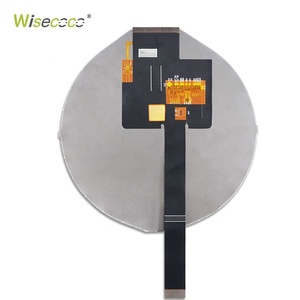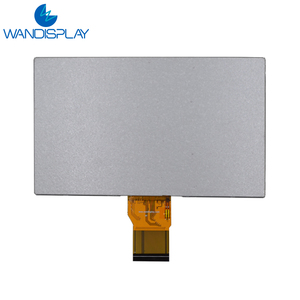
All categories
Featured selections
Trade Assurance
Buyer Central
Help Center
Get the app
Become a supplier

(152 products available)




















































The controller boards with the MIPI DSI interface are meant to control LCDs and other display units, especially in mobile electronics like smartphones, tablets, and laptops. The MIPI DSI (Mobile Application Interface) is a high-speed interface for transferring data from the host to the display. What follows are the most common types of controller boards with MIPI DSI interfaces:
Arduino Controller Board
The most popular open-source electronic platform, Arduino, provides MIPI DSI support through extensions or libraries in some of its variants. The MIPI DSI interface in some of the more advanced boards, like the Arduino Due, can be used to control displays. Most of these boards are based on simple microcontrollers and are generally used for simpler display applications requiring less processing power and fewer display cables.
Industrial Controller Boards
Industrial and commercial applications use industrial controller boards, which are more robust and have longer working lives. Many of these boards have MIPI DSI interfaces for driving compact and high-end resolution industrial displays. These boards trade-in the size and form factor as they are designed to withstand the challenges of an industrial setting, including temperature differentials, vibrations, and working environment exposure. Robustness and functionality for industrial needs are both critical.
Single Board Computers (SBCs)
MIPI DSI interfaces are supported on several popular single-board computers, such as the Raspberry Pi and BeagleBone series. Raspberry Pi models 4B and 3B+, for instance, support MIPI DSI, which can be used for display connections. These boards typically run Linux-based operating systems and can be used in different projects and products for education, DIY, and Kodi media center. They provide sufficient processing capacity along with a compact size.
Embedded Controller Boards
Small, MIPI DSI-equipped embedded controller boards are intended for use in embedded systems. These boards are designed to accomplish specific tasks in embedded applications, such as driving a display screen in an embedded gadget. Small form factors and low power consumption are more important than performance for these boards. MIPI DSI would be quite useful for the embedded displays that require high image quality.
Development Kit Boards
Many semiconductors and display driver manufacturers provide controller boards for the MIPI DSI display interface as part of their display technology development kits. This type of board is useful for display design engineers and system integrators. For example, these kits can be used to evaluate the performance of the displays and develop embedded applications. These boards include documentation and software meant for development.
The essential features of a controller board that concern business owners target the working ability of the MIPI DSI interface, so it is key to understand them. Get even more focused on the specifications that concern the perfect performance of the controller boards:
MIPI DSI Specification
The MIPI DSI specification guarantees the safe and speedy transfer of information, and the DSI is the specification that governs the display of information. It allows the board to interface with many pixelated displays to drive a huge display by allowing a high bandwidth interconnection between a processor and a display.
Resolution and Refresh Rate Compatibility
One important function of the controller board is resolution and refresh rate compatibility. The interface should be fit for resolution supported by the display, like Full HD, QHD, or 4K. High refresh rates provide smoother display functions and should also ensure this capability, especially for fine graphics or animations. Fortifying the resolution and refresh rate ought to avoid compatibility problems with different displays.
Number of Display Channels
Various display channel numbers mean that different display types can be controlled by a controller board. The ideal board to use should have a sufficient display channel number for the current project. The controller boards with higher channel numbers can operate more complex systems that require several displays or large displays with additional display units.
Power Management
Today, people want their electronics to be effective in reducing power consumption whenever possible, which is why power management is so important. Many controller boards have flexible power control options with respect to the display and the entire system. It helps to lessen the power usage so that the display does not consume any extra power when it is not in use, which is particularly important for battery-operated devices.
Data Rate and Bandwidth
The efficiency of the MIPI DSI interface is influenced by data rates and bandwidth. Higher data rates mean better images and efficient working of fast applications as the interface is capable of moving more information, for example, films and games. Bandwidth is a crucial determinant of the style of application the controller board is designed to function with and the resolution of the display in question.
Touchscreen Integration
Today, many controller boards running the MIPI DSI interface come with a touch screen interface. Touchscreen support is a very important consideration, especially in new scenarios where the display requires touch input. This helps with the connection of the touch screens and the application of their implementing ready-made solutions to give a more interactive experience.
Latency
Latency becomes an important metric in such applications, especially in video streaming, where low latency comes in handy. Lower latency simply means instant input signal response on whichever application is being displayed. An application of the controller board with MIPI DSI has low latency; hence, it is ready to respond as will be required in gaming, AR applications, and real-time operations.
Smartphones
Smartphones use controller boards with MIPI DSI interfaces to connect to their LCDs and OLEDs. The MIPI DSI framework enables the fast transfer of information so that the display will be clear and dynamic. The accuracy of the images and the swiftness with which dynamic content is displayed make this feature very important for consumer electronic displays.
Tablets and Laptops
Laptop and tablet displays are also controlled by controller boards with MIPI DSI interfaces. These devices use MIPI DSI to assure premium resolution displays, such as Full HD and 4K displays, to their users. A board with a MIPI DSI interface is especially appropriate for active designs like PCs and tablets, where clarity and smoothness are vital for productivity and entertainment purposes.
Wearable Technology
Wearable technology like smartwatches and fitness trackers also applies the controller board with MIPI DSI. OLED and LCD displays in these gadgets may rely on MIPI DSI for efficient data transfer. Because these gadgets are very small, and a lot of them are battery-operated, it's imperative that they have efficient controller boards. MIPI DSI is an active component in making the gadget compact and giving an enhanced user interface despite the size.
Automotive Displays
Automotive infotainment systems and instrument clusters rely on controller boards with MIPI DSI in their vehicles. MIPI DSI enables smooth and fast display performance for premium-resolution touchscreen displays and dashboard indicators. Automotive controller boards are built to be extremely safe and reliable in their operation because of the nature of their application. MIPI DSI works perfectly in infotainment systems and digital dashboards, delivering clear graphics and information.
Industrial Equipment
In industrial monitoring systems, controller boards in industrial settings also use MIPI DSI displays. MIPI DSI framework is ideal for these displays that require larger resolutions to show vital information graphs and system parameters smoothly. Because they are used in mission-critical applications, the robustness and longevity of industrial devices are vital. MIPI DSI performs effectively to enhance usability in control panels, HMIs, and other monitoring equipment.
Digital Signage
LCDs and OLEDs in digital signage boards, such as public information boards, advertisement displays, or interactive kiosks, use controller boards with MIPI DSI interfaces. The interface ensures premium image quality, and vast data amounts required for dynamic content to be transferred efficiently. The clarity in commercial applications like signage becomes vital as it directly impacts the effectiveness of communication with the audience.
Performance Versatility
The basic step in purchasing the right controller board is understanding the major application it is intended for. Hence, knowing the type of display panel or device it needs to control will narrow down the options. Other aspects that must be considered include aspects such as data rate, resolution, and refresh rate. The effectiveness of the overall displayed output will depend on how well the controller board is compatible with the display being used.
Hardware Specifications
Consider the main specifications of the hardware, such as the type of processor or core it uses, the amount of internal storage memory, and the peripheral interfaces. For demanding applications, boards with varying core architectures or multicore processors are better suited. Boards should also have different input/output options like HDMI, USB, and GPIO and power management features to ease the implementation process.
Software and Development
One controller board benefit over another can be supported by the software and development environment. While some boards support a popular programming interface like Python or C, others may require more specialized skills. Also, important factors to consider are the operating systems the board supports, such as Linux or Android. It relates to the period of development, the ease of use, and how flexible the system is regarding application needs.
Budget and Cost-Effectiveness
Last but not least, why a specific controller board is chosen relates to the cost. Pricier boards will, in most cases, come packed with superior features and greater performance capabilities. However, this does not rule out diversity; towards the low-end price spectrum, boards are available that meet basic functionality. Determine the board that will best meet the demands of the current project relative to its cost effect on performance.
Community and Technical Support
Even support can prove instrumental in the board selection process. Boards that have received substantial utilization within forums and community support may have documentation, sample codes, and practical advice. Additionally, if a manufacturer or vendor provides professional support, it can also be critical in fine-tuning problems that may arise during development or implementation.
MIPI DSI is meant to connect the controller boards with LCDs and OLED displays. It smoothly transfers vast data amounts for superior-resolution displays, such as those found in smartphones and tablets.
The basic function of a controller board is to connect the display panel. Aboard based on MIPI DSI will support premium-resolution display and higher refresh rates, making it perfect for static or dynamic images.
The interface ensures that premium quality is achieved on large signage displays by transferring large data amounts required for static and dynamic content effectively and efficiently.
It is crucial that a controller board's resolution, latency, and robustness be quality-assured in regard to monitoring systems. These boards must reliably perform in mission-critical industrial environments under adverse conditions.
Battery-driven gadgets like smartphones, wearables, and portable medical gear would benefit from low-power MIPI DSI controller boards. Efficiency in power use is critical for these devices since battery life influences customer satisfaction.